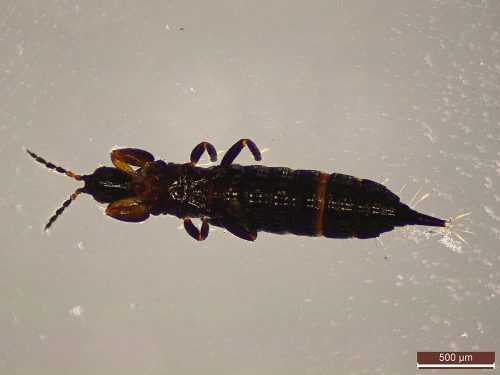Thrips are small, narrow insects that live on sap from plants and animals. There are many types of thrips. They hide in plants and like heat.
Also known as:
Thunder flies
Thrips (Thysanoptera) are small, slender insects ± 1 mm in size that live on sap from plants and animals. There are many types of thrips. They hide in plants and like heat. Then they also multiply quickly.
Thrips damage plants by sucking out plant tissues. The empty cells fill with air. This causes the silvery sheen at the top of the leaf. Black dots can be seen near the affected leaves; the droppings of thrips. Thrips cause deformed fruits and flowers and corkiness on vegetables.
Professional agriculture experiments with strips of flower crops (phacelia, annual green manures) between onion plants that attract ladybirds, among other insects. Ladybird larvae eat thrips and help prevent infestation by thrips.
Where to find
- Vegetable plot and ornamental garden
- Houseplants
Control
In cool summers, they are not numerous. Lots of thrips? Spray with water and most thrips disappear.
Biological control with roundworms (nematodes) dramatically reduces the number of thrips.
Another also biological control consists of the simultaneous deployment of flower bugs (Orius laevigatus) and predatory mites (Stratiolaelaps scimitus). The Orius flower bug controls both nymphs and adult thrips; the Hypoaspis predatory mite tackles the eggs and nymphs in the soil. The combination of these two provide effective control of thrips.
Prevention
Frogs, ladybirds and predatory mites are the natural enemies of thrips. A (vegetable) garden with a varied planting contributes to an ample supply of natural enemies of thrips.
The predatory mite (Stratiolaelaps scimitus) is used for preventive control of thrips. This mite controls a wide range of insects, including thrips pupae and larvae.

